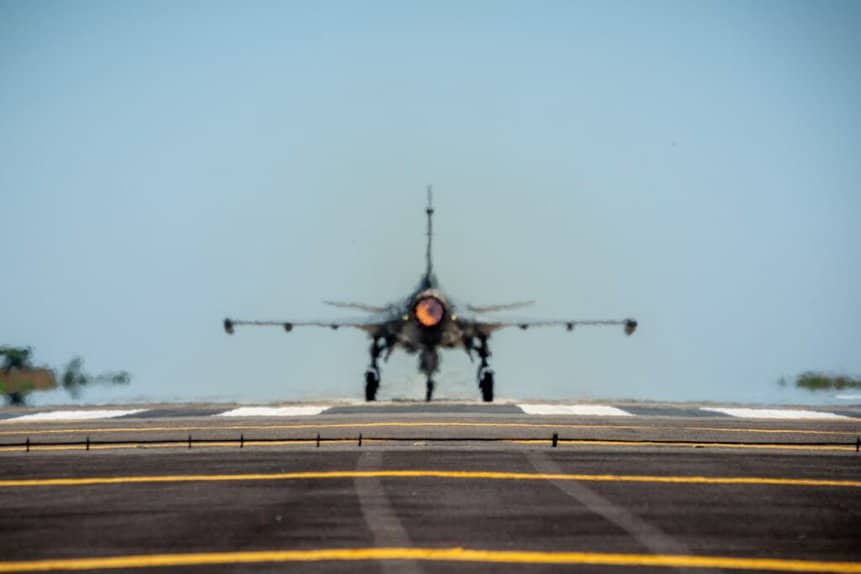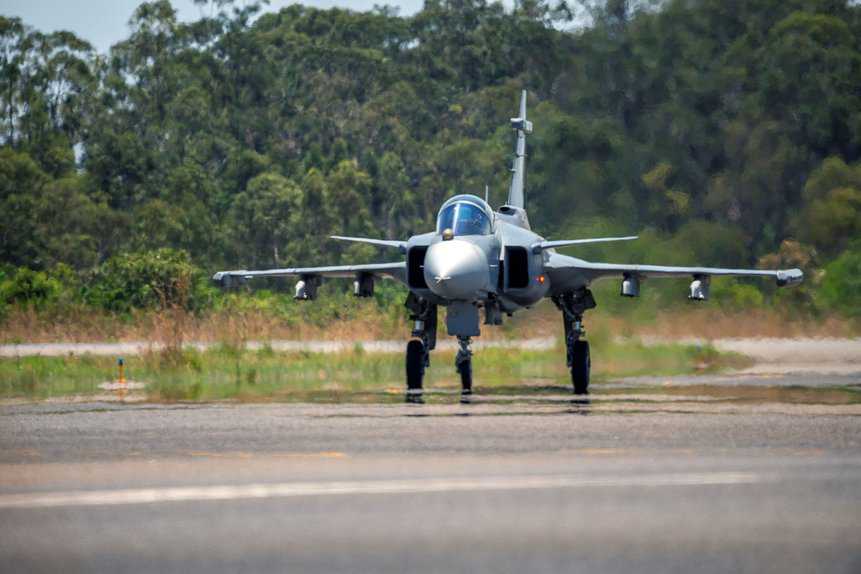SAAB announced that the 4100 fighter used for testing in Brazil was at Anápolis Air Base (BAAN) for a series of flights that tested the aircraft's behavior and performance in high temperatures.
The hot weather flight test campaign taking place in the country aims to validate, in a real situation, the engineers' predictive calculations regarding the external heat that the aircraft can withstand.
The city of Anápolis was chosen for this stage due to the climate and high altitude. “Anápolis is located at around 1.100 meters above sea level and has average temperatures of 35º C, which is why we chose to bring the fighter, based in Gavião Peixoto, at the Gripen Flight Test Center (GFTC), to Anápolis. This is also the city where fighter jets already operate”, explained Erik Magnusson, Saab flight test engineer responsible for global weather tests, who came from Sweden to monitor the tests.

A team of Brazilian professionals from Saab Brasil and Embraer is involved in several phases of the climate tests, which began in September, in Gavião Peixoto, and will continue in the coming months to validate other temperature parameters as part of the global tests. “This is an important step that forms part of the Gripen E global testing campaign, as the tests carried out here are valid for all aircraft of the model, not just the Brazilian Gripen. This was also the first test this year outside of Gavião Peixoto and at the Brazilian Air Force base”, highlighted Magnusson.
In Anápolis, the fighter was exposed to the sun for long periods so that engineers could evaluate the aircraft's behavior in the city's high temperatures. For three days, Saab test pilot Jonas Jakobsson took off with the Gripen at an average temperature of 32ºC and completed a journey lasting approximately 1 hour. The results will be used to validate that the aircraft can operate in hot weather, as required in Brazil.
The approximately 800 sensors, including the plane's own sensors and others installed especially for the test, collected data from the aircraft on the ground and throughout the flight. The information was transmitted in real time to a telemetry room set up by the Saab and Embraer team at BAAN to monitor the tests. Upon landing, the brake temperature is measured, cooling is carried out, and data from the systems is downloaded for further analysis.
“The initial results were positive and confirmed much of what we had already predicted. Data from all sensors will now be used to validate that Gripen can operate with excellent performance in regions with a hot, dry and high-altitude climate, such as that found in Brazil, or in any other location in the world with similar temperatures,” he said. Eduardo Kitada, systems engineer at Embraer, responsible for climate tests in Brazil.
Read also
- Azul Conecta signs partnership to incorporate electric engines into the Cessna Caravan fleet
- Embraer will present the KC-390 in South Africa
- Facing F-16 delays, Turkey wants to buy used Eurofighter Typhoon fighters
With information: SAAB
Do you want to receive our news firsthand? Click Here and be part of our Group on Whatsapp or Telegram.


